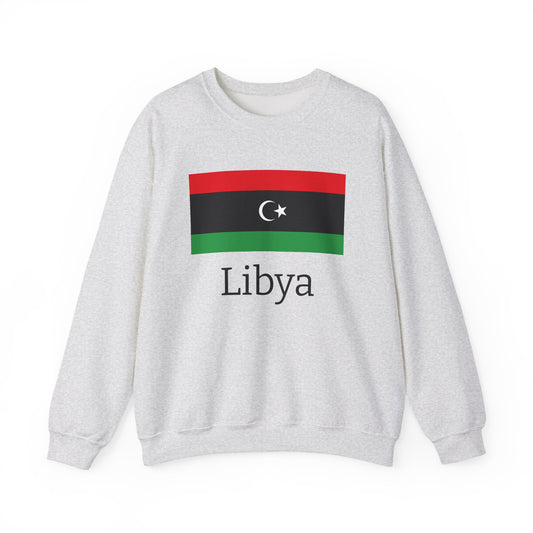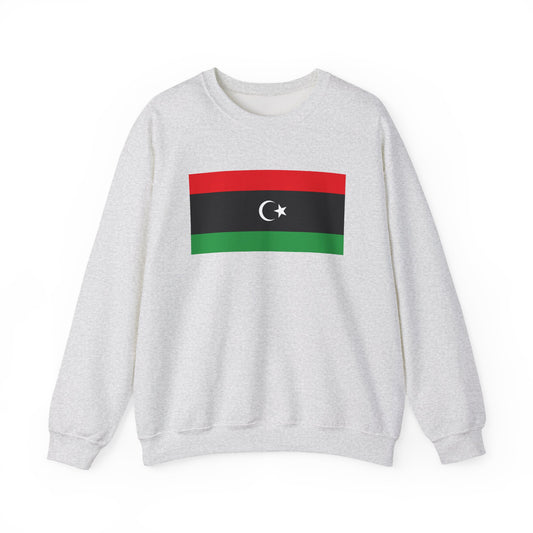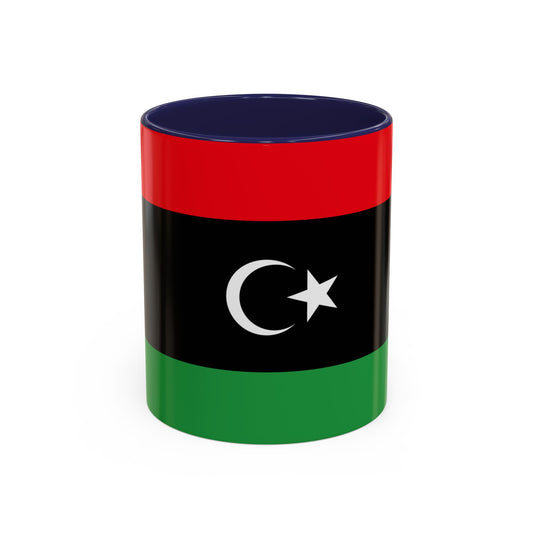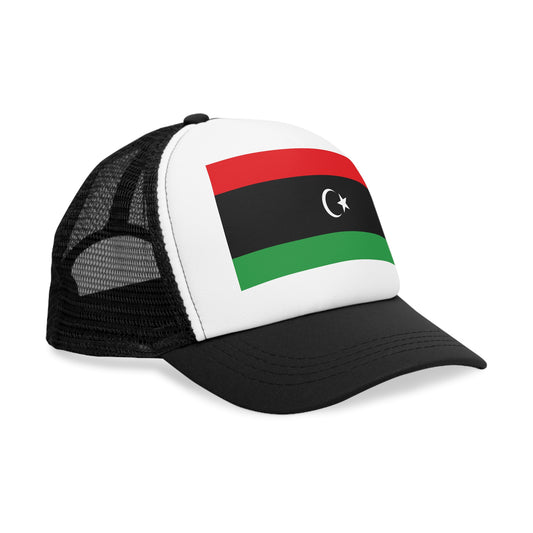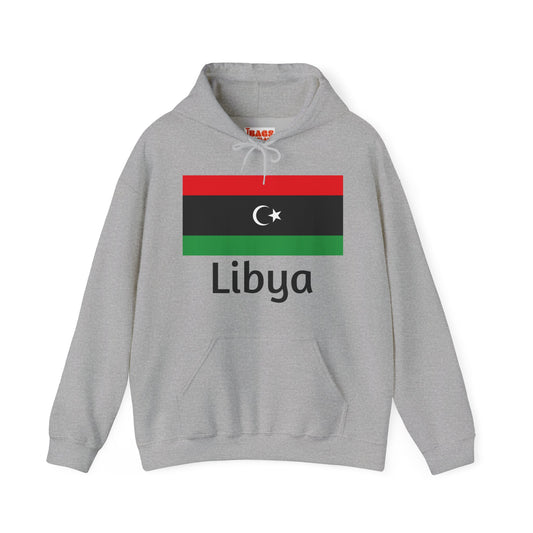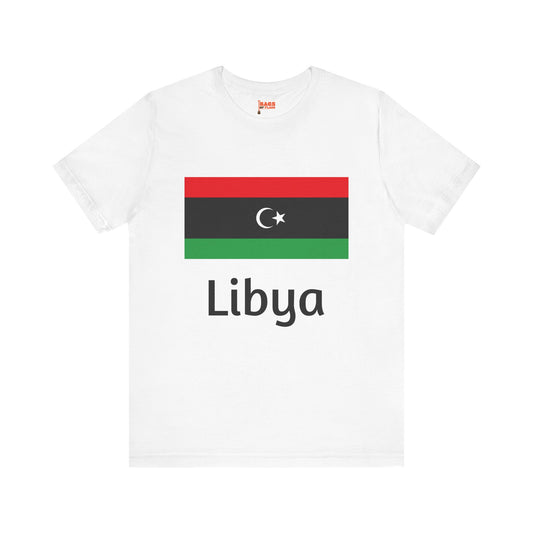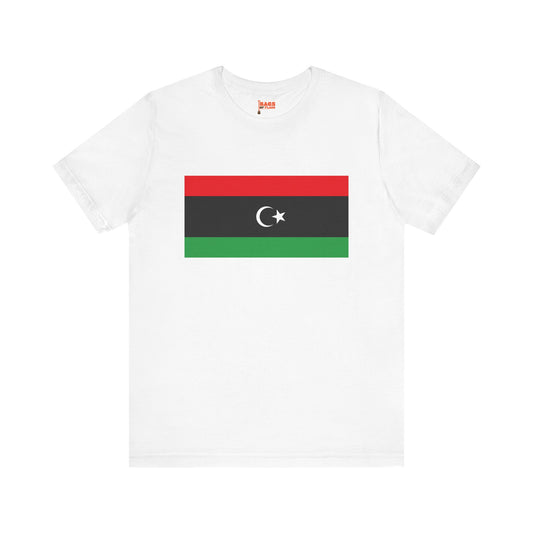-
Libya Sweatshirt
Regular price $34.15 USDRegular priceUnit price / per -
Libya Flag Sweatshirt
Regular price $34.15 USDRegular priceUnit price / per -
Libya Pillow
Regular price $22.65 USDRegular priceUnit price / per -
Libya Backpack
Regular price $59.79 USDRegular priceUnit price / per -
Libya Leather Patch Hat
Regular price $18.85 USDRegular priceUnit price / per -
Libya Trucker Cap
Regular price $14.90 USDRegular priceUnit price / per -
Libya Hoodies
Regular price $34.40 USDRegular priceUnit price / per -
Libya T-shirts
Regular price $22.79 USDRegular priceUnit price / per -
Libya Flag on T-shirt
Regular price $22.79 USDRegular priceUnit price / per -
Libya Flag Hoodie
Regular price $34.40 USDRegular priceUnit price / per
Collection: Libya
With its unique design and colors, the Libya flag has a rich history that dates back to its adoption. Over the years, the flag has become a symbol of national pride and identity for the people of Libya. However, like many flags around the world, the Libya flag has not been without controversy. We will explore the history of the Libya flag, its symbolism, current relevance, and any controversies or discussions surrounding it.
Overview of the Libya Flag's Design and Colors

The Libya flag features a striking yet straightforward design, entirely engulfed in a vibrant green hue. This color not only dominates the flag but serves as the flag's sole characteristic, devoid of any additional symbols, emblems, or designs. The decision to opt for a single-color, mainly green, was deliberate, aiming to convey a message of simplicity, purity, and a deep-rooted connection to Islam. Green, often associated with nature and renewal, is significant in Islamic tradition, symbolizing peace and religion. Therefore, while minimalist, the flag's design is imbued with profound symbolism that resonates with the country's cultural and religious identity. This simplistic yet meaningful representation distinguishes the Libya flag, making it unique among the world's national flags and a powerful symbol of national unity and pride.
Historical Context of the Libya Flag
The Libya flag has undergone significant transformations reflecting the nation's tumultuous history. Initially introduced in 1951 upon gaining independence from Italy, the original flag was a tri-color banner with horizontal stripes of red, black, and green, and it featured a white crescent and star in the central black stripe. This design symbolized the unity and identity of the newly independent nation. However, the flag's appearance changed dramatically in 1977 when Muammar Gaddafi came into power. Gaddafi introduced a flag entirely green in color, representing his political ideology and the prominence of Islam within the country.
This flag remained until the fall of his regime in 2011. Following Gaddafi's overthrow, Libya reverted to the pre-Gaddafi flag design, re-adopting the original tri-color flag with the crescent and star. This decision marked a return to the symbols of independence and a move away from the Gaddafi era, signaling a new chapter in Libya's history. The shifting designs of the Libya flag over the years reflect the nation's evolving political landscape and the changing tides of its national identity.
Symbolism Behind the Libya Flag

The symbolism embedded within the Libya flag speaks volumes through its simplicity and color choice. The predominance of green, a color deeply entrenched in Islamic culture, emphasizes Libya's rich Islamic heritage and the central role of Islam in the country's identity. This color is not chosen arbitrarily but is a deliberate nod to the importance of the religion and its values in Libya, evoking a sense of peace, prosperity, and connection to the natural world.
In addition to the overarching green color, the elements included in the previous version of the flag—the white crescent and star—were rife with meaning. The crescent moon, a universally recognized symbol of Islam, signifies progress and the growth of knowledge, reflecting Libya's aspirations towards enlightenment and advancement. Meanwhile, the star stands as a beacon of unity and freedom, concepts that are foundational to the Libyan state. Together, these symbols encapsulated the nation's identity, aspirations, and the unity of its people under the banner of Islam.
This deep well of symbolism contained within the flag's design elements underscores the Libyan people's connection to their cultural and religious roots, serving as a constant reminder of the values that guide the nation forward.
Current Relevance of the Libya Flag
Today, the Libya flag continues to play a crucial role in national identity, visible at government buildings, national events, and military ceremonies, symbolizing unity and the collective aspirations of the Libyan people. Despite its prominence, the flag has been at the center of discussions and occasionally controversies, particularly regarding which version best represents the nation. Since the overthrow of Gaddafi's regime in 2011 and the re-adoption of the pre-1977 flag, debates have emerged concerning the symbols and colors that should officially represent Libya. These debates are not merely about aesthetic preferences but reflect deeper discussions on national identity, history, and the direction of the country's future.
In addition to its symbolic use, the flag has become a focal point during protests and demonstrations, where it is displayed to signify resistance, demand change, or celebrate national achievements. This active use in the public domain showcases the flag’s evolving relevance, adapting to the contemporary socio-political landscape of Libya while retaining its historical significance. The ongoing dialogue about the flag underscores the complex relationship between national symbols and their meanings, illustrating how flags can serve as powerful conduits for expressing collective memory, aspirations, and the enduring spirit of a nation.
Additional Facts and Protocols Surrounding the Libya Flag
Libya adheres to a set of established protocols for the respectful treatment and display of its flag, emphasizing its importance as a national symbol. Among these practices, it is paramount that the flag is never allowed to touch the ground, underscoring the respect and reverence it commands. Additionally, the flag is to be flown at half-mast during periods of national mourning as a sign of respect and collective sorrow. This protocol serves to unify the nation in times of grief, reflecting a shared sense of loss and reverence.
A notable fact about the Libya flag, particularly during Gaddafi's regime, was its design as the only national flag in the world that was a solid color with no design, insignia, or emblem. This distinct characteristic of the flag highlighted Libya's unique stance on the global stage. While the flag has since returned to its original design featuring the crescent and star, the period of the solid green flag remains a significant chapter in Libya's history. This historical aspect of the flag's design not only underscores the nation's unique identity but also reflects the changing political landscapes through which the country has navigated.


